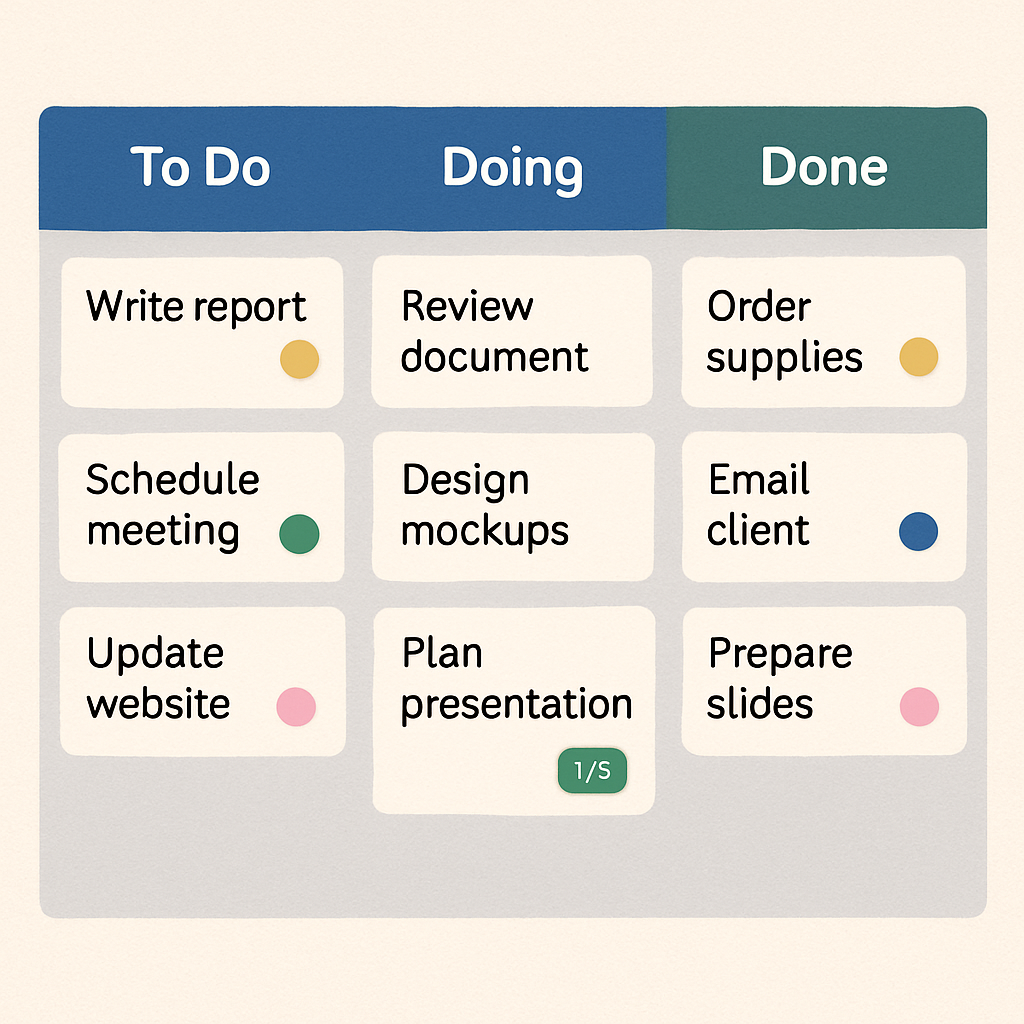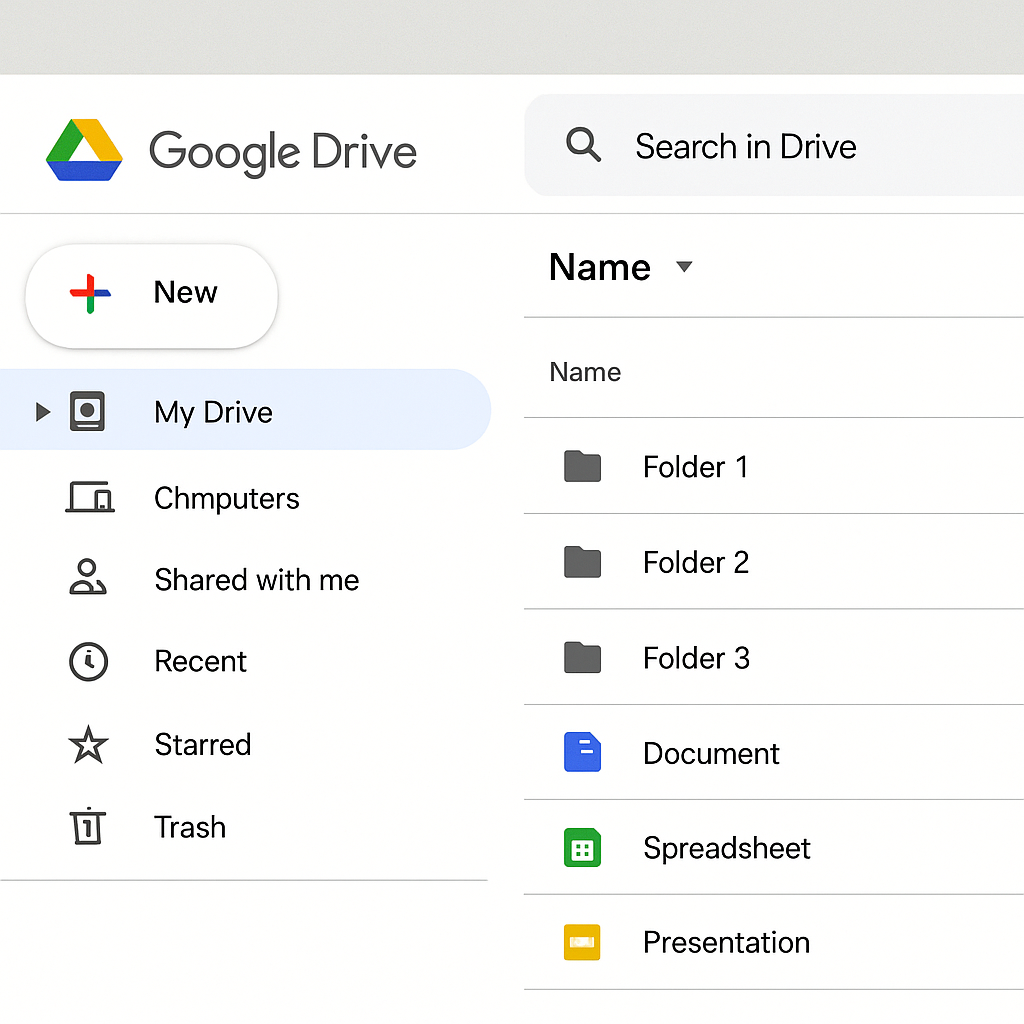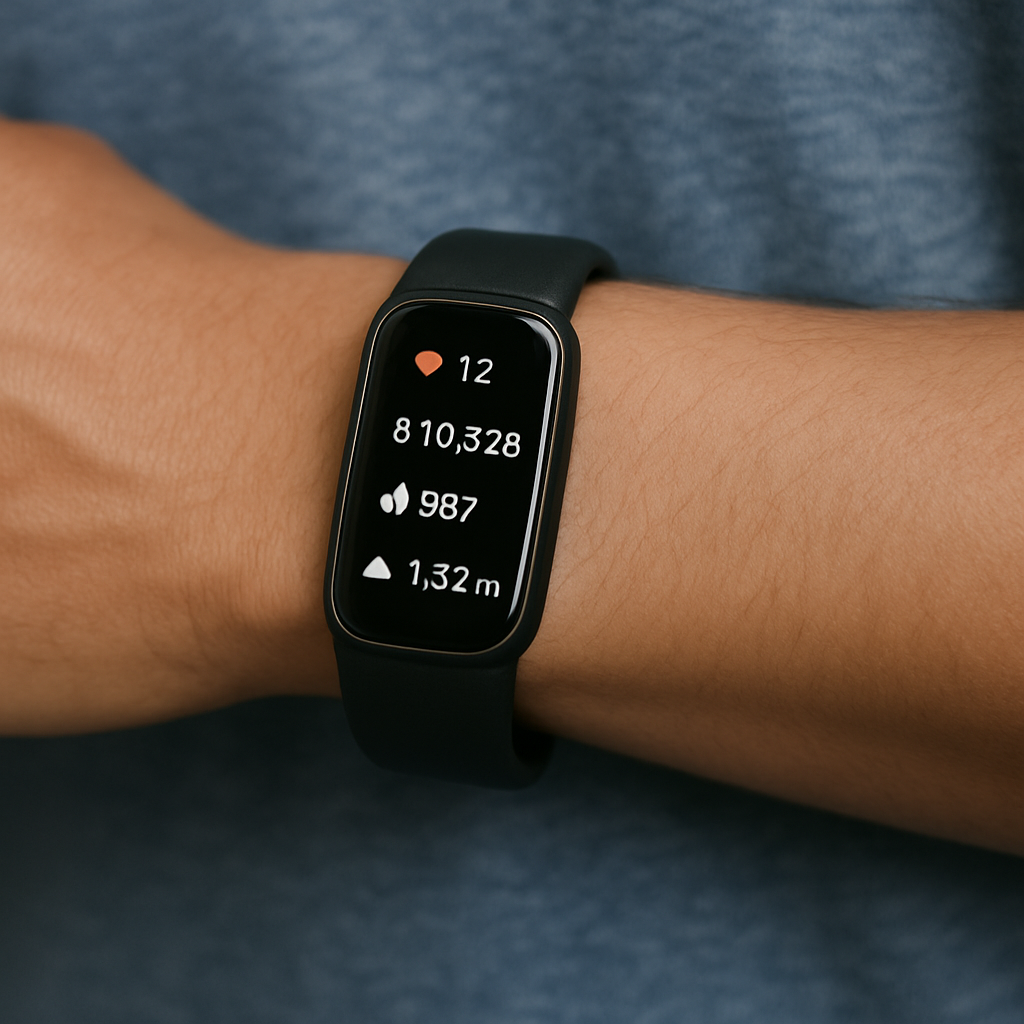The Role of Productivity Apps
Productivity apps are more than just digital tools—they’re essential allies in the remote work environment. They serve as the backbone for managing time, organizing tasks, and streamlining workflows. In a world where work and personal life often blur, these apps help maintain boundaries and ensure that remote workers can concentrate on what truly matters. With the right apps, you can enhance your efficiency, reduce stress, and achieve a better work-life balance.
Enhancing Efficiency and Focus
Efficiency is at the heart of any productive work environment. Productivity apps help by cutting down on time spent on repetitive tasks and allowing workers to focus on higher-priority projects. Features like automation and task prioritization are integral to keeping workflows smooth. When distractions are minimized, focus is sharpened, leading to better quality work and faster completion times.
Supporting Work-Life Balance
A balanced work-life is crucial for long-term success and personal well-being. Productivity apps play a vital role in helping remote workers draw lines between their professional duties and personal time. By using these apps to set clear boundaries, you can avoid burnout and maintain a healthy lifestyle. They empower workers to take control of their schedules, ensuring that work commitments don’t overshadow personal life.
Top Time Management Apps
Effective time management is the cornerstone of productivity. Here are some of the best time management apps for remote workers in 2025:
1. Todoist
Todoist is a powerful task management app that helps you organize your tasks, set priorities, and keep track of deadlines. With its intuitive interface, you can easily create to-do lists, set reminders, and collaborate with others on shared projects. Todoist’s integration with other productivity tools makes it a versatile choice for remote workers.
Organizing Tasks with Ease
Todoist allows users to categorize tasks into projects, making it easier to handle complex workflows. You can break down large projects into smaller, manageable parts, ensuring nothing falls through the cracks. This feature is particularly useful for remote workers managing multiple projects simultaneously. By visualizing tasks within organized categories, it becomes simpler to plan and execute.
Collaboration Features
Collaboration is seamless with Todoist, as it allows multiple users to work on shared tasks. You can assign tasks to team members, comment on tasks, and even upload files. This fosters a sense of teamwork and ensures that everyone is on the same page. Remote teams can thus maintain a cohesive workflow, even when spread across different time zones.
Integration and Versatility
One of Todoist’s strengths is its ability to integrate with a wide array of other productivity tools. Whether you use calendars, communication platforms, or file-sharing services, Todoist can sync with them to streamline your workflow. This versatility ensures that you spend less time switching between apps and more time focusing on your work.
2. Trello
Trello is a visual project management tool that uses boards, lists, and cards to help you organize your tasks. It’s perfect for remote teams who need to collaborate and keep track of projects in real-time. With Trello, you can move tasks through different stages of completion, assign tasks to team members, and set deadlines to ensure everything stays on track.
Visual Organization
Trello’s board system is a visual delight, making task management intuitive and engaging. Each board represents a project, with lists that can signify different phases of a project. Within these lists, cards can be created for individual tasks. This visual representation helps in quickly assessing project status and identifying bottlenecks.
Real-Time Collaboration
For remote teams, real-time updates are crucial. Trello facilitates this by allowing team members to comment on cards, attach files, and mention colleagues. Notifications keep everyone updated, ensuring no task is missed or delayed. This real-time interaction mimics a physical workspace, bridging the gap created by remote work.
Customization and Flexibility
Trello offers various customization options, from labels and due dates to checklists and power-ups. Power-ups are integrations with other apps, enabling you to extend Trello’s functionality. The flexibility offered by Trello ensures that it can adapt to the needs of any team, regardless of size or industry.
3. RescueTime
RescueTime is an automatic time-tracking app that provides insights into how you spend your time on digital devices. By analyzing your digital habits, RescueTime helps you identify time-wasting activities and make informed decisions to boost your productivity. With its detailed reports and focus mode feature, you can minimize distractions and maximize your efficiency.
Automatic Time Tracking
RescueTime stands out for its ability to track your time automatically. There’s no need to start or stop timers; the app runs in the background, recording how much time you spend on applications and websites. This passive tracking means that you get an accurate picture of your daily activities without any added effort.
Insightful Reports
The data collected by RescueTime is transformed into comprehensive reports that highlight how your time is spent. These reports can show trends over days, weeks, or months, helping you understand your productivity patterns. By identifying where your time goes, you can make adjustments to optimize your workflow.
Distraction Management
RescueTime’s focus mode is a powerful tool for blocking distractions. By temporarily restricting access to time-wasting websites, it ensures that you remain focused on your tasks. This feature is particularly useful during periods when concentration is crucial, such as when working on deadlines or complex tasks.
Essential Productivity Tools
Beyond time management, remote workers need a variety of productivity tools to enhance their workflows. Here are some must-have productivity apps for 2025:
4. Slack
Slack is a communication platform that streamlines collaboration and communication for remote teams. With channels, direct messaging, and integrations with other productivity tools, Slack keeps team members connected and informed. It’s an indispensable tool for remote workers who need to communicate effectively and stay updated on team activities.
Seamless Communication
Slack simplifies communication by organizing conversations into channels. Each channel can be dedicated to a specific project, team, or topic, making it easy to find relevant discussions. Direct messaging allows for private conversations, ensuring that communication is efficient and targeted.
Integrations and Bots
Slack’s strength lies in its ability to integrate with hundreds of other apps, from project management tools to file storage services. Bots and automated workflows can be set up to handle repetitive tasks, such as reminders or daily updates. This integration capability turns Slack into a central hub for team collaboration.
Keeping Teams Connected
Remote work can lead to feelings of isolation, but Slack bridges this gap by providing a space for casual conversations and team bonding. Channels for non-work topics, like hobbies or interests, help build a sense of community. By fostering a connected team environment, Slack enhances both productivity and morale.
5. Notion
by Filip Baotić (https://unsplash.com/@filipbaotic)
Notion is an all-in-one workspace that combines note-taking, task management, and collaboration features. It’s a versatile tool that can be customized to fit your specific needs, whether you want to create databases, plan projects, or organize notes. Notion’s flexibility makes it a favorite among remote workers who value adaptability and organization.
Comprehensive Workspaces
Notion allows users to create comprehensive workspaces that incorporate various elements like text, databases, calendars, and more. This all-in-one approach means you can plan, document, and track projects within a single platform. Having everything in one place reduces the time spent switching between different tools.
Customizable Templates
Notion offers a vast array of templates for different use cases, from project management to personal planning. These templates can be customized to fit the unique needs of your workflow. This flexibility ensures that you can tailor your workspace to your specific requirements, enhancing both efficiency and productivity.
Enhancing Team Collaboration
Collaboration in Notion is seamless, with the ability to share pages and work in real-time with colleagues. Comments and mentions enable effective communication, while version history ensures that changes can be tracked and reverted if necessary. This collaborative feature set makes Notion ideal for teams working together remotely.
6. Zoom
Zoom is a video conferencing app that has become synonymous with remote work. With its high-quality video and audio capabilities, Zoom facilitates virtual meetings, webinars, and team collaboration. Whether you’re hosting a team meeting or conducting a client presentation, Zoom ensures that your communication remains clear and effective.
Reliable Video Conferencing
Zoom’s reliability and quality make it a go-to choice for virtual meetings. With features like HD video, screen sharing, and recording, it caters to both small team meetings and large webinars. This versatility ensures that communication remains effective, regardless of the audience size.
Interactive Features
Zoom offers interactive features like breakout rooms, polls, and Q&A sessions, making meetings more engaging. These features allow for active participation, ensuring that all attendees can contribute effectively. This interaction is crucial for maintaining engagement and productivity during remote meetings.
Security and Privacy
Zoom has prioritized security, with features like password protection, waiting rooms, and end-to-end encryption. These measures ensure that your virtual meetings are secure and private. Knowing that your data is protected allows you to focus on the meeting content without worry.
Choosing the Right Productivity Apps
With so many productivity apps available, selecting the right ones for your needs can be overwhelming. Here are some tips to help you make the best choice:
Identify Your Needs
Determine the specific challenges you face in your remote work environment. Do you struggle with time management, communication, or task organization? Identifying your needs will guide you in selecting the right apps.
Assessing Personal Workflow
Start by analyzing your daily workflow to identify areas that need improvement. Are there tasks that frequently get delayed or mismanaged? Understanding your unique challenges will help in choosing apps that directly address these pain points.
Prioritizing Features
Once you’ve identified your needs, prioritize the features that will have the most significant impact on your productivity. Whether it’s automation, collaboration, or integration capabilities, knowing what you value most will streamline the selection process.
Balancing Cost and Value
Consider the cost of the apps in relation to the value they provide. While some apps offer free versions, premium features might be worth the investment if they significantly enhance your productivity. Ensure that the benefits justify the expense.
Consider Integration
Choose apps that integrate seamlessly with the tools you already use. Integration reduces the need to switch between apps and enhances your overall productivity.
Evaluating Compatibility
Before committing to new apps, evaluate how they will fit into your existing tech ecosystem. Check for compatibility with current tools to ensure a seamless workflow. Integration can save time and reduce the complexity of managing multiple platforms.
Exploring Automation
Look for apps that offer automation features to streamline repetitive tasks. Automation can enhance productivity by reducing manual input and minimizing errors. Integrating apps that can automate routine processes can have a significant impact on efficiency.
Enhancing Collaboration
For team-based work, ensure that new apps support collaboration and communication. Integration with communication tools can enhance team productivity and keep everyone aligned. Choose apps that foster teamwork and collective problem-solving.
Test and Evaluate
Take advantage of free trials and explore different apps to see which ones align with your workflow. Evaluate their features, user interface, and ease of use before making a commitment.
User Experience Assessment
During trials, pay attention to the user experience and interface design. An intuitive app is easier to adopt and integrates more smoothly into daily routines. A positive user experience can significantly enhance overall productivity.
Feature Testing
Test the key features of each app to ensure they meet your needs. Experiment with different functionalities to see how they fit into your workflow. This hands-on approach will provide insights into the app’s potential impact on productivity.
Gathering Feedback
If you work in a team, gather feedback from colleagues who will also use the apps. Their perspectives can provide valuable insights into usability and effectiveness. Collaborative feedback ensures that the chosen apps meet the needs of the entire team.
Future Trends in Productivity Apps
As technology continues to advance, productivity apps are evolving to meet the changing needs of remote workers. Here are some trends to watch for in 2025:
AI-Powered Features
Artificial intelligence is being integrated into productivity apps to automate routine tasks, provide personalized insights, and enhance decision-making.
Automation and Efficiency
AI can automate mundane tasks, freeing up time for more critical work. By handling repetitive processes, AI boosts efficiency and allows workers to focus on strategic initiatives. Automation can lead to significant time savings and increased productivity.
Personalized Recommendations
AI-powered apps can analyze user behavior to provide personalized recommendations. These insights help in optimizing workflows and improving time management. Personalized suggestions can guide users toward more productive habits and routines.
Enhancing Decision-Making
With data-driven insights, AI can assist in making informed decisions. By processing large volumes of data, AI helps identify trends and predict outcomes. This capability enhances strategic planning and decision-making.
Enhanced Security
With the rise of remote work, ensuring the security of sensitive information is paramount. Expect productivity apps to prioritize robust security features to protect your data.
Data Protection Measures
Productivity apps are incorporating advanced encryption and authentication methods to safeguard data. These measures protect sensitive information from unauthorized access. Ensuring data security is crucial for maintaining trust and compliance.
Privacy Controls
Apps are offering more comprehensive privacy controls, allowing users to manage their data preferences. This control empowers users to protect their personal information and maintain confidentiality. Privacy controls are essential for building confidence in digital tools.
Compliance and Regulation
As regulations around data protection evolve, productivity apps are adapting to meet compliance standards. Adhering to legal requirements ensures that apps remain reliable and trustworthy. Compliance is vital for organizations to avoid legal issues and maintain credibility.
Mobile Optimization
As remote work becomes more flexible, productivity apps are being optimized for mobile devices, allowing you to stay productive on the go.
Cross-Platform Functionality
Mobile optimization ensures that apps provide a consistent experience across devices. Cross-platform functionality allows users to switch seamlessly between desktop and mobile environments. This flexibility supports productivity regardless of location.
Offline Capabilities
Many mobile apps are incorporating offline capabilities to ensure productivity even without an internet connection. This feature is invaluable for remote workers who may experience connectivity issues. Offline access ensures continuity and reduces downtime.
User-Friendly Interfaces
Mobile apps are prioritizing intuitive and user-friendly interfaces to enhance the user experience. Simple navigation and responsive design make it easier to accomplish tasks on smaller screens. A user-friendly interface boosts mobile productivity and satisfaction.
Conclusion
In 2025, productivity apps will play a crucial role in helping remote workers navigate the challenges of their work environment. By leveraging the right time management apps and productivity tools, you can enhance your efficiency, stay organized, and achieve your professional goals. Whether you’re a solo freelancer or part of a remote team, these apps will empower you to work smarter and thrive in the digital landscape.
Selecting the Right Tools
Remember, the key to success lies in selecting apps that align with your needs and integrating them seamlessly into your workflow. The right tools can transform your work experience, making tasks more manageable and enjoyable. Choosing wisely will set the foundation for long-term productivity and success.
Embracing Technological Advancements
As technology continues to evolve, staying informed about new productivity app features and trends is essential. Embrace advancements that can enhance your work processes and keep you competitive. By adapting to technological changes, you ensure that you remain at the forefront of productivity.
Achieving Work-Life Balance
With the right productivity apps, you can achieve a balance between professional demands and personal well-being. This balance is critical for sustaining long-term productivity and avoiding burnout. With a well-rounded approach, you’ll be well-equipped to tackle the demands of remote work and enjoy a fulfilling and productive career.






